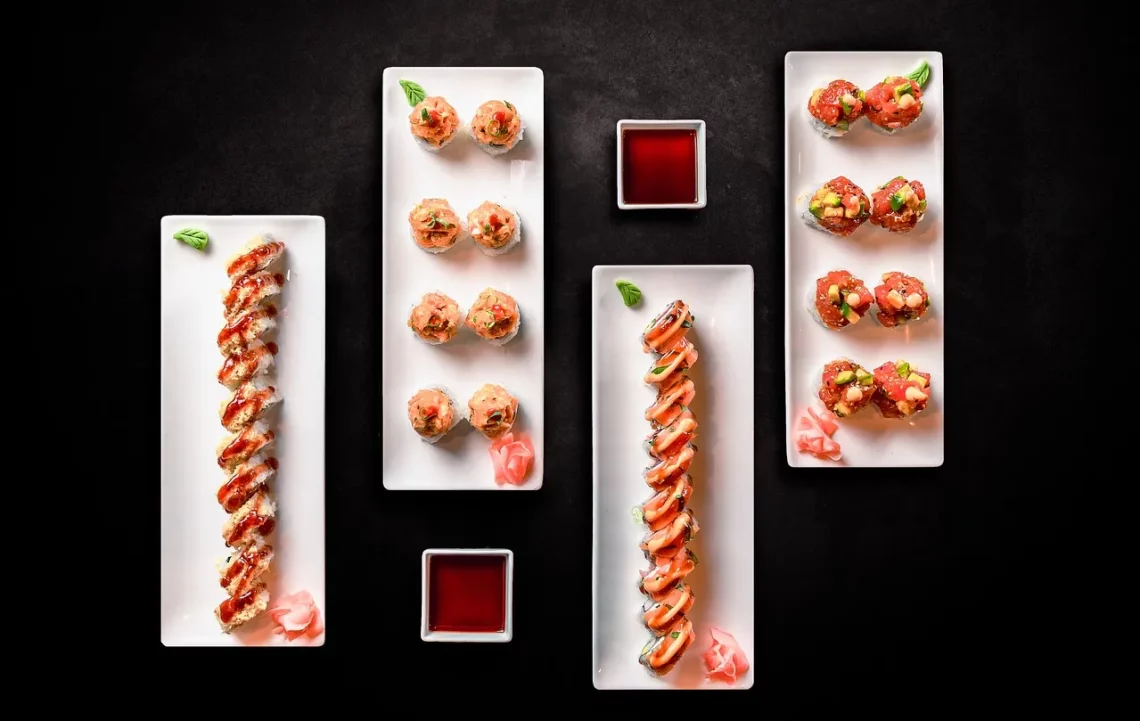
Exploring the Unique Flavors of Toban Yaki Cuisine
Exploring the culinary landscape of Toban Yaki cuisine reveals a rich tapestry of flavors and techniques that reflects the culture and history of Japan. Originating from the traditional cooking methods of the region, Toban Yaki emphasizes the use of a hot ceramic tile or plate, known as “toban,” which allows for a unique cooking experience. This method not only imparts a distinct flavor to the ingredients but also enhances the communal aspect of dining, as food is often prepared and cooked right at the table.
The artistry behind Toban Yaki lies in its simplicity, allowing the natural flavors of fresh ingredients to shine through. As diners gather around the hot plate, they engage in a culinary ritual that fosters connection and appreciation for the meal. The choice of ingredients can vary widely, from tender meats and seafood to an array of seasonal vegetables, all cooked to perfection on the sizzling surface. Such a method encourages experimentation and creativity, making each meal a unique experience.
In this exploration, we delve deeper into the components that make Toban Yaki a beloved choice for both locals and those seeking authentic Japanese cuisine. The interplay of flavors, the importance of presentation, and the cultural significance of communal dining all contribute to the allure of this culinary tradition.
The History of Toban Yaki
Toban Yaki has its roots deeply embedded in Japanese culinary history, tracing back to a time when traditional cooking methods were not only a way to prepare food but also a means of bringing people together. The term “Toban” refers to the ceramic plate that is pivotal to this cooking style, while “Yaki” means grilled or cooked. This method is thought to have originated in the Edo period when communal dining began to flourish.
Historically, the use of hot stones or tiles in cooking was common across various cultures, but Japan’s adaptation of the toban method has allowed it to stand out. The toban itself is usually made from clay, which retains heat exceptionally well, ensuring an even cooking temperature. This feature allows chefs to sear ingredients quickly, locking in moisture and flavor.
Over time, Toban Yaki has evolved beyond just a cooking method; it has become an experience that embodies Japanese hospitality. Restaurants specializing in Toban Yaki often feature an interactive dining setup where patrons can enjoy cooking their meals right at their tables. This not only enhances the flavor of the food but also encourages conversation and bonding among diners.
As global interest in Japanese cuisine continues to rise, Toban Yaki has started to gain recognition outside of Japan. Chefs around the world are incorporating this technique into their menus, adapting the ingredients to local tastes while maintaining the essence of the traditional method. This blending of cultures is a testament to the universal appeal of Toban Yaki, making it a cherished culinary art form that transcends borders.
Essential Ingredients in Toban Yaki
The beauty of Toban Yaki lies in its versatility and the quality of ingredients used. While there are no strict rules dictating what can be cooked on the toban, certain ingredients are staples that enhance the experience.
At the heart of Toban Yaki are fresh proteins such as beef, chicken, pork, and seafood. High-quality cuts of meat, particularly marbled beef like Wagyu, are favored for their flavor and tenderness. Seafood options often include succulent shrimp, scallops, and fish, which benefit from the quick cooking method that preserves their delicate texture.
Vegetables play an equally important role in Toban Yaki. Seasonal produce such as asparagus, mushrooms, zucchini, and bell peppers are commonly used. These vegetables are often prepared simply, allowing their natural flavors to shine through. Additionally, they provide a colorful presentation to the dish, making it visually appealing.
Marinades and sauces are essential in enhancing the overall flavor profile of the meal. Soy sauce, miso, and teriyaki sauce are popular choices that add depth to the ingredients. Furthermore, dipping sauces made from sesame, ponzu, or wasabi can elevate the dining experience, allowing diners to customize their flavors.
A noteworthy aspect of Toban Yaki is the emphasis on freshness. Ingredients are often sourced locally, ensuring that they are at their peak flavor and nutritional value. This focus on quality not only enhances the taste but also contributes to the overall dining experience, reflecting the Japanese philosophy of “umami” – the savory essence that defines much of their cuisine.
The Art of Cooking with Toban Yaki
Cooking with Toban Yaki is an art form that requires attention to detail and an understanding of timing. The process begins with preheating the toban, which is essential for achieving the perfect sear on the ingredients. Once heated, the toban provides a unique cooking surface that allows for both grilling and steaming, depending on how the ingredients are arranged.
One of the hallmarks of Toban Yaki is the communal aspect of cooking. Diners often take turns grilling their chosen ingredients, making the meal a shared experience. This interactive approach not only fosters conversation but also encourages individuals to experiment with different cooking times and techniques. For instance, some may prefer their vegetables lightly charred, while others might enjoy them more tender.
The cooking process itself is quite simple yet requires a certain level of finesse. As the ingredients hit the hot surface, they sizzle and release their natural juices. It’s essential to monitor the cooking process closely, as overcooking can lead to loss of flavor and texture. The beauty of this method is that it allows for immediate feedback; diners can taste their creations as they cook, making adjustments as necessary.
Moreover, presentation is key in Toban Yaki. The final dish is often served directly from the toban, allowing diners to appreciate the aesthetic appeal of the beautifully grilled ingredients. The vibrant colors and enticing aromas create a feast for the senses, ensuring that the meal is memorable long after the last bite.
The Cultural Significance of Communal Dining
The practice of communal dining is deeply rooted in Japanese culture, and Toban Yaki exemplifies this tradition beautifully. Sharing a meal is seen as an opportunity to strengthen bonds among family and friends. The act of gathering around a hot plate fosters a sense of unity and togetherness, creating an atmosphere of warmth and camaraderie.
In Japan, meals are often seen as a celebration of life and a way to connect with others. Toban Yaki, with its interactive cooking style, embodies this philosophy. As diners engage in the cooking process, they share not only food but also stories, laughter, and memories. This social interaction is an integral part of the dining experience, reinforcing relationships and creating lasting impressions.
The cultural significance of communal dining extends beyond personal connections. In many Japanese households, traditional meals are prepared and enjoyed together, emphasizing the importance of family and community. Toban Yaki fits seamlessly into this narrative, as it encourages participation from all diners, regardless of age or cooking skill.
Furthermore, the ritual of preparing and sharing food can be seen as a form of respect for the ingredients and the effort that goes into creating a meal. This appreciation for the culinary arts is a fundamental aspect of Japanese culture, highlighting the connection between food, nature, and community.
In conclusion, Toban Yaki cuisine is a remarkable culinary experience that blends history, flavor, and social interaction. Its unique cooking method and emphasis on fresh, high-quality ingredients make it a beloved choice for many. As you explore the world of Toban Yaki, you’ll not only discover a delicious way to enjoy food but also a deeper understanding of the cultural significance behind this cherished tradition.
Please note that while this article discusses culinary practices and ingredients, it does not constitute medical advice. Always consult with a healthcare professional for any health-related concerns.




